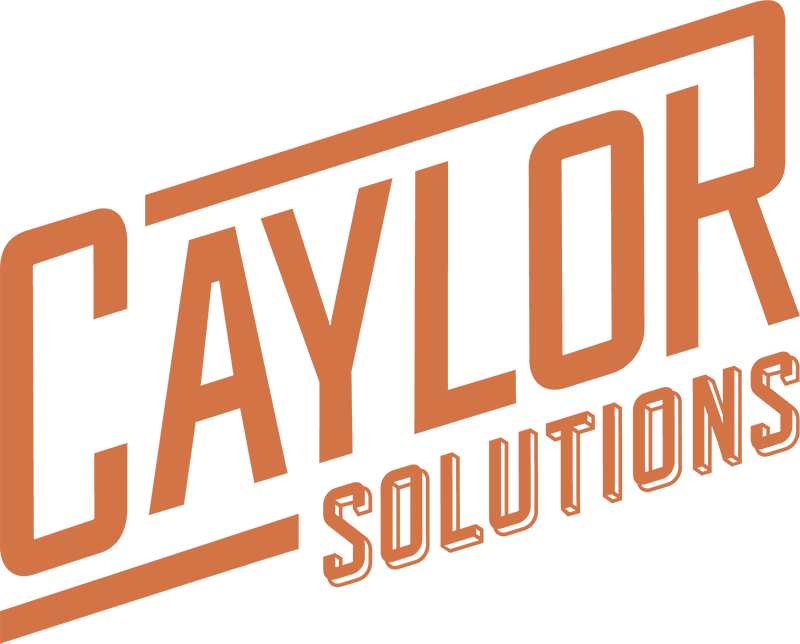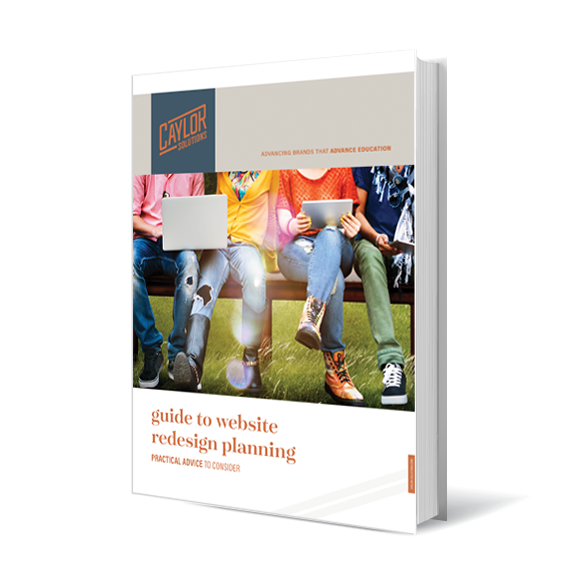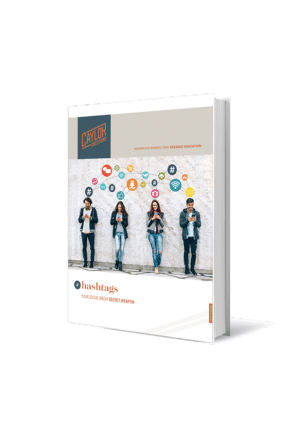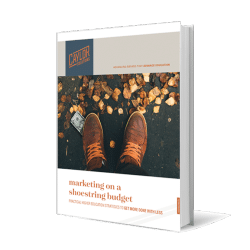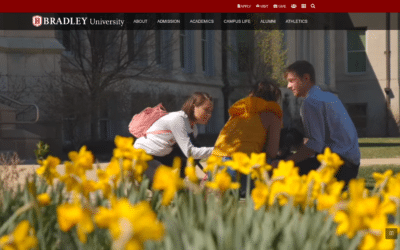What social media networks do you focus on for enrollment marketing? Instagram, Facebook, Twitter, maybe Snapchat and TikTok, all seem like obvious choices. But what about LinkedIn Marketing Solutions?
If you haven’t already, there are some pretty compelling reasons to carve out a piece of your social media strategy for LinkedIn.
Why You May Have Overlooked LinkedIn
Let’s start by addressing two major reasons it might not be a priority for admissions:
1. “We’ve always used LinkedIn to recruit staff and faculty, not students.”
Fair enough. As a professional platform, it is ideal for recruiting employees.
But just how far apart is the mindset of job seekers from consumers of education today? Consider that 80 percent of college freshmen report that getting a job is a critical factor in their decision to attend college.
If anything, we can expect this number to increase among non-traditional students, and at this point, Gen X and Millennials have been using LinkedIn most of their adult lives. Whether job seekers or prospective students, they’re all there for the same reason: career advancement.
2. “We don’t want to shift our focus too far away from traditional students.”
It’s true that it would be unwise to take too many eggs out of Gen Z-friendly baskets, like Instagram. But a few eggs could really pay off.
It may surprise you to learn that nearly a third (29 percent) of LinkedIn users are 18-29. The youngest among this group are the oldest of Gen Z, a generation characterized by entrepreneurial values championed on this platform, like self-reliance and ambition.
Furthermore, as of 2018, nine percent of high school students were on the platform. That might not seem like much. But there is at least anecdotal evidence that the number is growing. Educators are increasingly coaching students to leverage the platform as a competitive edge in collegiate admissions.
Why It’s Time to Check Out LinkedIn Marketing Solutions
This data starts to paint a slightly different picture from the way we tend to look at LinkedIn. It has always been the realm of work. Employers and job seekers. Company pages and resumes.
But as learners who flock to LinkedIn see themselves not as “students,” but as self-directed consumers of career development resources, this platform creates a unique opportunity for you.
Here, you can meet these highly-motivated learners where they are.
You can present your institution as the means to help them reach their goals.
And the approach seems to be working. According to the platform, in 2019, LinkedIn Marketing Solutions drove over 1.8 million student leads and 120,000 undergraduate and graduate enrollments.
Let’s take a look at how it works.
Organize Your LinkedIn Presence
The first step to using LinkedIn effectively is to organize your presence there. Your institution may have a main university page as well as other pages for individual departments or colleges. The best practice is to link your affiliated pages to the main page.
This gives you the advantage of increasing exposure of your overall brand and maintaining brand standards. This goes beyond logo designs. For example, you can work to ensure the content presented on your business school page is on par with your school of IT page.
Next, build up adoption. Encourage (or perhaps “volun-tell”) administrators, staff and faculty that haven’t done so already to create profiles that link them to the institution. Ask them to follow your university pages so they receive your content in their news feeds.
Reach out to alumni to do the same. The more connections that lead back to your university pages, the better.
Maximizing Organic Reach on LinkedIn
With the proper architecture in place, you’ll be much more effective with content publishing. What you’ll have is a kind of para-website that exists to distill all the distinctly professional, career development content from your own website property.
In addition to basic information about the school, this is the place to post content that will be attractive to users seeking career development resources and inspiration:
- Alumni success stories
- Outcomes
- New nontraditional course offerings
- New degree programs
- Workshop details
- Faculty accomplishments (research, awards, etc.)
- Faculty hires
- Non-athletic student accomplishments (business competitions, debate wins, etc.)
Be sure to import any relevant videos to appropriate pages as well. There is a video tab where page visitors can peruse all video content, similar to YouTube. (See the University of Pittsburgh’s page for a good example.)
With enough individuals following your university pages, actively sharing the content, you can create a pretty good organic presence among different kinds of influencers. But to get the most out of LinkedIn, you need to leverage paid services to reach learners.
Paid LinkedIn Marketing Solutions
With paid services, you can target your ideal prospects with a variety of advertising formats. These range from fairly standard to pretty exciting.
Targeting Options
Beyond basic demographics (age, gender, location, etc.), you can also zero in on prospects using other strategic criteria.
Many of these are ideal for non-traditional students:
- You can target employees of a specific company with programs that will help them advance within their current field.
- Job experience is a filter you might use to direct advertisements about certification programs and workshops.
- Filtering by education level will help you direct messaging about graduate programs.
Some criteria will help with traditional student recruitment as well:
- You can target interest categories (e.g. Arts and Entertainment, Business and Management, Politics and Law, etc.) that relate directly with degree programs. There are hundreds of subcategories under each one.
- It may make sense to target certain LinkedIn groups to which students – or more likely, their teachers – belong, such as groups created by high schools.
Once you’ve set your criteria, you can select what kind of campaign you want.
Advertising Formats
There are a number of different ad types on LinkedIn. I won’t get into the details of the pricing model here, but I do want to give you an idea of what you can do.
Text Ads
Standard text ads appear in the margins and under the top menu bar, only on the desktop version of LinkedIn. The downside here is that an estimated 57 percent of LinkedIn traffic is mobile.
Dynamic Ads
A neat twist on standard text ads, dynamic ads are automatically personalized to the viewer. You can create copy that shows the user’s profile pic alongside your logo. It might say, “[NAME], follow [YOUR INSTITUTION], for exciting opportunities to advance your career!”
Sponsored Posts
One of the best ways to boost your organic reach is through sponsored posts. These show up in the news feeds of your prospects on both desktop and mobile. They appear just like regular posts, but are labeled as “Promoted.”
Sponsored Messaging (InMail)
You’ve got two options for paid messaging with LinkedIn:
- Message ads are essentially InMail messages you send to users that match your criteria. This is basically just like sending an email to a well-targeted list of recipients.
- Conversation ads are more interesting. You can program these with clickable responses to your message, which LinkedIn calls a “choose your own path” experience.
As long as you’re crafting warm, smart copy for them, and they’re well-targeted, sponsored messaging is a great way to create engagement with prospects.
Campaign Tools
LinkedIn offers some smart tools that help facilitate lead generation.
Lead Generation Forms
You can create these within LinkedIn. Reinventing the wheel isn’t necessary. Just take the components of your website’s RFI (request for information) form and replicate them here.
Insight Tag
This is LinkedIn’s version of the Facebook Pixel. You install it on your website’s pages. When they accept it as a “cookie,” the tag allows you to follow LinkedIn users who clicked through to your site. They are then automatically retargeted with ads based on their initial interest.
Campaign Manager
Through this dashboard, you can track the effectiveness of your campaign and make changes. For example, you can easily change a single variable (e.g. the copy, the image) for a few days to compare and contrast results. (We refer to this as an A/B test.)
Paid Content
As for what content to put into your ads or sponsored messages, first think about the entrepreneurial, ambitious, professional “self-help” ethos of the platform. What do learners who identify with this most want to see?
I would craft messages about the many ways you can help learners advance in:
- Business
- Healthcare
- Technology
- Teaching
- Law
- And other popular career paths
Content that speaks to personal growth in a more general way, such as general education subject areas, may be less effective here (e.g. history, graphic art, religion).
But not necessarily. It may be effective and worth a paid campaign if you can tie your message to job skills attainment, certifications, etc.
For example, your school of religion may have a message about “exploring” Christian ministries used in other communications. But this is an audience of self-starters. Try a more assertive message like, “Take your ministry to the next level.” That’s the tone to strike.
Nurture Your Leads
You can waste a lot of money with LinkedIn Marketing Solutions if you treat your campaigns as awareness campaigns. This is a lead generation tool. Every campaign is a lead generation campaign.
Be prepared to nurture them.
If LinkedIn users are filling out an RFI form, don’t just put them into the top of your funnel and start sending them cold emails. Address them as the motivated, ambitious learners they are and see themselves to be.
Admissions professionals, it’s time to dip your toe in the water with LinkedIn Marketing Solutions.
I’m excited about what I see as the increasing potential for LinkedIn to help colleges and universities bring in a special kind of learner.
Will the bulk of your students come from this platform? Not in the immediate future, no.
But could some of your best and brightest students, leaders, future alumni and advocates come from LinkedIn? And in increasing numbers in the coming decade?
Absolutely. Let’s work together to make it happen.
Looking for Enrollment Marketing Content that Works?
You’re in luck! We’ve curated 25 awesome ideas inspired by top higher ed institutions across the country and put them in one handy guide: 25 Ideas for Great Admissions Content.

-
- 25 enrollment marketing content ideas you might never have considered before
- Guidance on how to use each one for best results
- Brief discussion on why they work to help you sell these ideas to your team
Get inspired.
Get enrollment results.
Get 25 Ideas for Great Admissions Content.
Download your copy today!
Featured image by Jirapong via Adobe Stock
